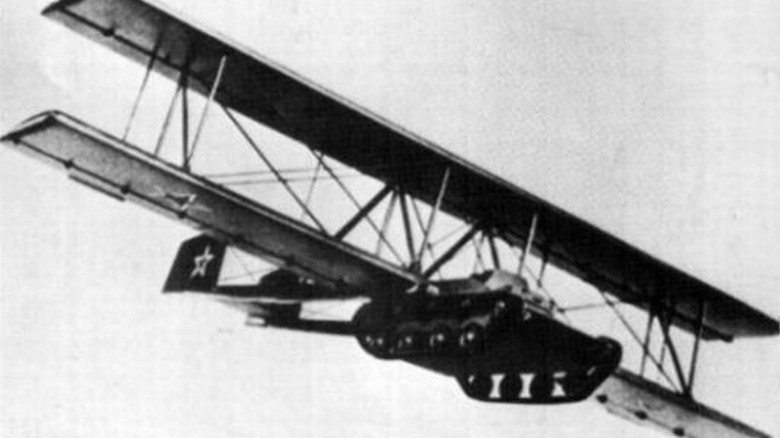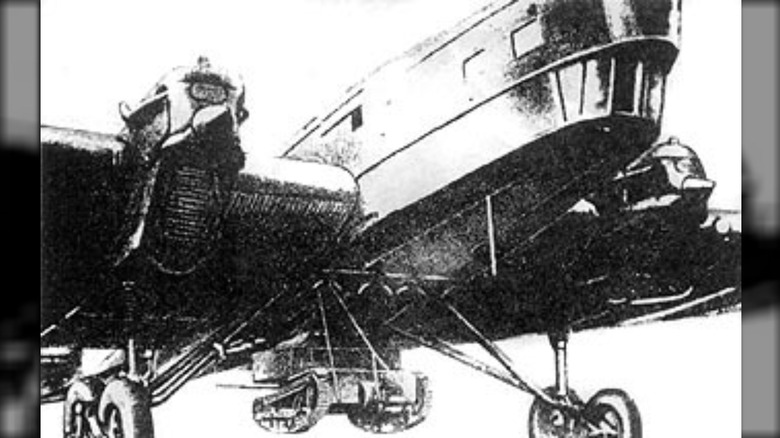Inside The Soviet Union's Failed Flying Tanks
War is a mostly destructive activity that the world would be better off without, if we could only figure out how to get along with one another. However, despite the gunshots and explosions, war can also create opportunities for innovation. As History.com points out, although World War II was the impetus for the creation of the atomic bomb, we also have the conflict to thank for such salubrious and helpful innovations as flu vaccines, widespread penicillin use, jet engines, radar, and other high tech stuff we now use every day.
But, they can't all be zingers. Despite the obvious benefits of the aforementioned inventions, war is also a calamitous succession of extremely bad ideas, most of which lead to even worse consequences. Sometimes, if we're lucky, a harebrained war-inspired idea simply fizzles out due to its own ridiculousness. Thankfully, that's exactly what happened with the Soviet Union's idea to put wings on tanks. Let's take a look into this bonkers idea and see just why it never got off the ground.
The Soviet Union's flying tanks were just too heavy
During the madness of WWII, someone in the Soviet Union had an idea that was going to revolutionize warfare. Or so that person thought. According to Listverse, the Soviet Union tried to create one of the most bizarre weapons ever: a flying tank that it called the Antonov A-40, aka Krylya Tanka, or "winged tank." In theory, it sounds absolutely terrifying and would supposedly give the army flying them a keen advantage over its enemies with their puny terrestrial tanks. They tried putting wings on a tank, which in turn would be taken up in the air by another plane, then dropped to glide gracefully into battle.
There was just one problem: tanks are very heavy machines. So the Soviets tried to lighten the A-40's load. They stripped it of guns, ammunition, fuel, headlights, and other things that make a tank a tank, but it was still too heavy to be practical. Also, it probably wouldn't be much good, anyway, if it were to be able to glide into battle without anything with which to shoot an enemy. The project carried out a single test flight, but the Soviets weren't impressed with the results, so the idea was scrapped. Who knows what we'll think of in the next world war. Hopefully, we'll be innovative enough to not start another one in the first place.

